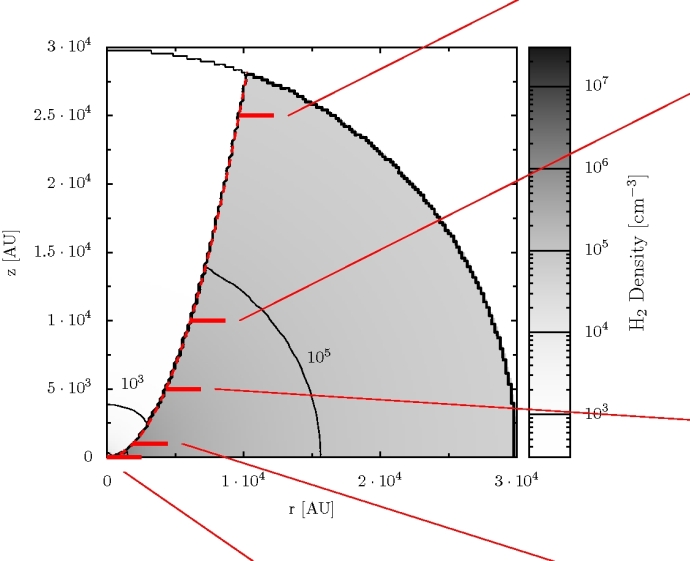| EPoS Contribution |
|
Radiative processes in star forming regions - HIFI first results
Carolin Dedes ETH Zuerich, Zuerich, Switzerland | |
| In my contribution, I will highlight first results of the Herschel HIFI observations of molecules in the envelopes of star forming regions. With its available frequency range and spatial resolution, it allows for the first time to study the chemistry of hydrides (e.g. CH, CH+, OH etc.). These simple species are key molecules of the chemical network of water and organic molecules. Chemical models predict the abundance to be sensitive on UV and X-ray radiation. The Herschel observations will thus allow us to study the protostellar high-energy radiation by these molecular tracers. In star forming regions with a nearby strong UV emitter (O-star), the observations of hydrides may be used to disentangle influences of internal and external radiation fields. | |
 | |
| Caption: CO+ in the two-dimensional axisymmetric model of AFGL 2591. Slices at different values of z are shown. The x-axis corresponds to the distance along the cut to the outflow region. The plots give the fractional abundance x(CO+) = n(CO+)/n(H2), the temperature, and the density in solid, dashed, and dotted lines, respectively. The figure in the top left shows a spherical model of the same source. The gray rectangle indicates the innermost 250 AU where no modeling has been performed. | |
| Collaborators: A. Benz, ETH Zuerich, Switzerland S. Bruderer, ETH Zuerich, Switzerland S. Wampfler, ETH Zuerich, Switzerland |
Key publication
Suggested Session: Chemistry, Herschel, Massive Stars |

